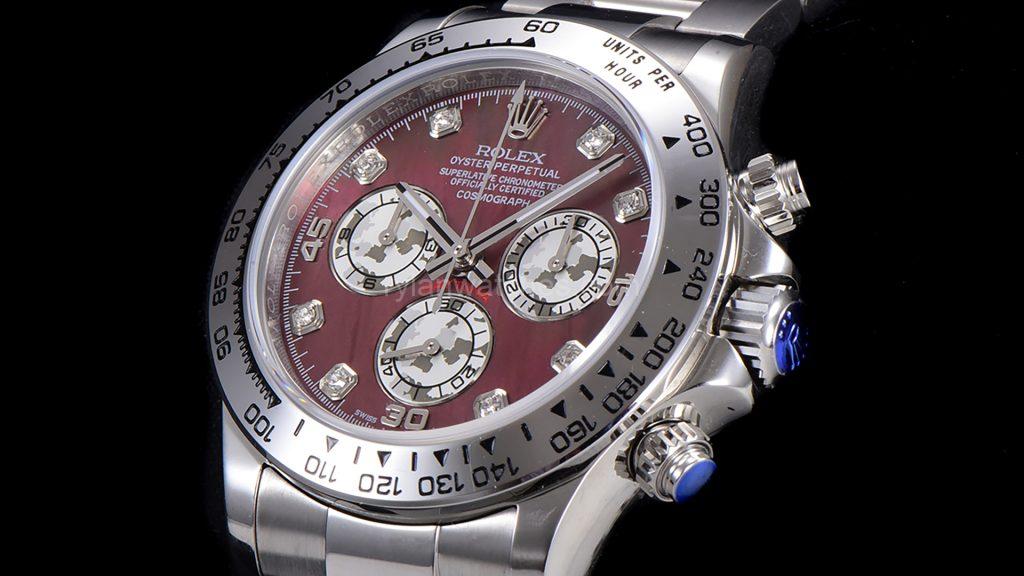Introduction
In today’s fashion-conscious world, watches are no longer just timekeeping tools; they’ve become a significant symbol of status and personal style. However, as the prices of luxury watches continue to soar, many people are turning to replica watches, especially in the men’s market. Whether it’s a love for design or the desire for an affordable alternative, replica watches provide an option for those looking to own luxury aesthetics without the luxury price tag.
However, not all replica watches are made equal. There’s a vast difference in quality across the market, ranging from low-quality imitations to high-quality replicas that mimic the original in impressive detail. Understanding how to distinguish these differences not only helps you avoid purchasing a substandard product but also ensures that you get value for your money. In this blog, we’ll take an in-depth look at how to spot the difference between high-quality and low-quality replica men’s watches, helping you make an informed buying decision.
1. Understanding High-Quality vs. Low-Quality Replica Watches
Before diving into specific details, it’s crucial to understand what makes a watch “high-quality” or “low-quality” in the replica world.
- High-Quality Replica Watches: These watches are made with materials that closely resemble those of the original. Everything from the case material to the watch’s functions is carefully replicated. These replicas pay attention to detail, often using high-end materials like stainless steel, sapphire glass, and even Swiss movements. The goal is to create a watch that is virtually indistinguishable from the original unless examined by an expert.
- Low-Quality Replica Watches: On the other hand, low-quality replicas are produced cheaply and quickly, often using inferior materials. They may only mimic the basic appearance of the original, but they lack the fine details that make the watch durable and visually stunning. These watches are prone to issues like poor timekeeping, visible imperfections, and quick wear and tear.
Having a clear understanding of these two categories forms the foundation of distinguishing replica watches in the marketplace.
2. Appearance and Material Quality: Comparing Craftsmanship
The appearance and material quality are often the first and most visible distinctions between high- and low-quality replicas. Here’s what to look for:
- Case and Bezel: High-quality replicas often use the same or similar materials as the original watches, such as stainless steel, titanium, or ceramic. These materials give the watch its authentic weight and finish, closely resembling the original. Additionally, the bezel in high-quality replicas is typically made from scratch-resistant materials. Low-quality replicas, by contrast, use cheaper alloys, making the watch feel lighter and often leaving the surface prone to scratches and discoloration.
- Dial Design: In high-quality replicas, the dial will be intricately crafted, with logos, text, and markers closely mimicking the original. The spacing, font, and alignment are typically spot on. Low-quality replicas often exhibit poor craftsmanship in this area, with text that’s either too large, poorly aligned, or printed in the wrong color. Even subtle details like the lume (glow in the dark) are often missing or poorly executed in low-end replicas.
- Hands and Markers: The hands and hour markers of high-end replicas are carefully shaped, polished, and filled with luminous material that lasts through the night. In contrast, low-quality replicas may have hands that look weak or incorrectly proportioned. Their luminous material either doesn’t glow or fades very quickly.
- Weight: High-quality replica watches are often designed to mimic the weight of the original watch by using quality metals and components. Low-quality replicas tend to be much lighter due to the cheaper materials used, which can be an immediate red flag.
3. Movement Quality: Swiss Movements vs. Cheap Alternatives
The movement (the watch’s internal mechanism) is the heart of any timepiece, and it’s another critical factor distinguishing high-quality replicas from low-quality ones.
- Swiss Movements: High-quality replica watches frequently use Swiss movements, such as ETA or Sellita, which are renowned for their accuracy, durability, and craftsmanship. These movements closely mirror those found in authentic watches and provide a smooth sweeping motion of the second hand in automatic watches. The presence of a Swiss movement significantly enhances the watch’s reliability and lifespan.
- Cheap Movements: Low-quality replicas often use inexpensive, mass-produced movements, primarily from Chinese manufacturers. These movements are not only inaccurate but prone to breaking or malfunctioning over time. The second hand in such watches may exhibit a ticking motion rather than the smooth sweep characteristic of luxury timepieces, making it a dead giveaway.
- Automatic vs. Quartz: High-quality replicas may come with automatic movements, where the watch is powered by the wearer’s wrist movements, just like the originals. Low-quality replicas often use battery-powered quartz movements to cut costs, which is noticeable in the behavior of the second hand (ticking versus sweeping).
4. Straps and Buckles: Material and Craftsmanship Matter
The strap or bracelet of a watch is not just a functional component—it is also an essential part of the overall aesthetic. This is another area where high-quality and low-quality replicas diverge significantly.
- Strap Material: High-quality replica watches use authentic materials such as genuine leather, stainless steel, or high-grade rubber, closely mimicking the original watch. The texture, stitching, and feel of these straps are usually comparable to luxury brands. On the other hand, low-quality replicas use synthetic leather, flimsy metal bracelets, or low-grade rubber, which not only feel uncomfortable but also wear out quickly.
- Buckle Quality: The buckle in high-quality replicas mirrors the craftsmanship of the original, often engraved with the brand’s logo, and operates smoothly. The mechanism will snap securely, ensuring a comfortable and reliable fit. Low-quality replicas, however, often feature poorly made buckles that may not close properly, or they may wear out after repeated use, leading to an insecure fit.
5. Logos and Engravings: Small Details, Big Differences
Luxury watches, especially brands like Rolex, Patek Philippe, or Audemars Piguet, are known for their meticulous engravings and logos, which are another area where high-quality replicas excel.
- Dial Logos: In high-quality replicas, the logo on the dial is precise in terms of size, placement, and font. Even under magnification, it is difficult to tell it apart from the original. Low-quality replicas often get this wrong, with logos that are too large, crooked, or use a font that doesn’t match the original design.
- Caseback Engravings: Some luxury watches have intricate engravings on the caseback or specific serial numbers. High-quality replicas meticulously copy these engravings, often going as far as replicating the serial numbers or limited-edition details. Low-quality replicas, however, may have shallow, poorly executed engravings, or in some cases, none at all.
6. Packaging and Documentation: Paying Attention to the Presentation
When you buy a luxury watch, the packaging and documentation are part of the experience. High-quality replicas often include nearly identical boxes, manuals, and warranty cards to enhance the illusion of authenticity. These accessories are typically made with high-quality materials and even have details like embossed logos and holographic stickers.
Low-quality replicas, on the other hand, often come in generic boxes or poorly made packaging. The accompanying paperwork is usually riddled with spelling errors or obvious design flaws. Paying attention to these details can further help you distinguish between a high- and low-quality replica.
7. Pricing: Too Cheap to Be True?
Price is another important indicator of quality when it comes to replica watches. High-quality replicas, due to their use of better materials and superior craftsmanship, are usually priced higher than their low-quality counterparts. While they may still be a fraction of the price of the original, they often cost several hundred dollars, reflecting the quality of the movement, materials, and finishing.
Low-quality replicas, on the other hand, can often be found for a mere fraction of that price, sometimes as low as $20 to $50. While this might seem like a bargain, the quality is often abysmal, and the watch might not last long. As the saying goes, “You get what you pay for.” If a deal seems too good to be true, it probably is.
8. Tips for Avoiding Low-Quality Replica Watches
To avoid purchasing a low-quality replica, consider the following practical tips:
- Do Your Research: Familiarize yourself with the original watch’s details before making a purchase. Knowing the specific model’s design, features, and movement helps you better spot discrepancies in replicas.
- Buy from Reputable Sellers: Ensure that you are buying from trusted sellers or websites that specialize in high-quality replica watches. Check reviews, ask for detailed photos, and don’t hesitate to ask questions about the watch’s specifications.
- Examine the Details: Once you receive the watch, take the time to examine every aspect closely. Look for the subtle details like weight, engravings, and logos that distinguish high-quality replicas from low-quality ones.
Conclusion
In the world of replica watches, the difference between high-quality and low-quality is stark. High-quality replicas, through their attention to detail, materials, and craftsmanship, offer a near-authentic experience for a fraction of the price. Low-quality replicas, however, are often disappointing, with poor timekeeping, shoddy craftsmanship, and materials that won’t stand the test of time.
By using the guide outlined above, you can confidently differentiate between the two, ensuring that you purchase a replica watch that not only looks good but also lasts. After all, even if it’s a replica, quality matters.


